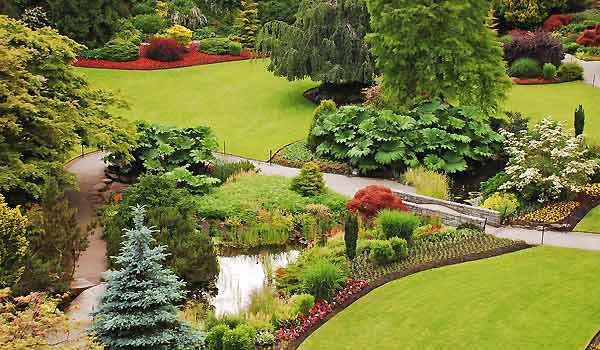Summer is nearly over and the garden outside is finished for the year. All the…
Composting and Organic Gardening

When you think about it, organic composting is just one more way of recycling. And when you create compost for your organic garden, not only will the plants benefit from this recycling, but so will you and your family, as you eat the fruits and vegetables that the garden produces.
What you are doing when you compost is decomposing previously existing organic matter, so it can be used to provide nutrients in the soil for new plants. The process does require some careful work, so you would be wise to do some reading and consulting on the subject first, to make sure you do it correctly.
You’ll want to put all your materials into a container or at least into some environment that you can control. Some websites suggest buying an actual composting drum, that you can turn (since the material does need to be turned from time to time). Otherwise, a large garbage can might do, or even a cleared hole in the ground, used just for this purpose.
You can put in all the fruit and vegetable food scraps you would normally be throwing away. Add leaves, grass, and hay, and you’ll have a good mixture. The general rule, according to the Garden Organic website, is about equal volumes of “green” and “brown” ingredients.
“Green” items would be things like nettles, grass cuttings, the raw vegetable leftovers from your kitchen, tea bags and coffee grounds, soft green prunings from plants, and animal manure from herbivores. All of these things are nitrogen rich, and also rot more quickly. “Browns” would be cardboard items like cereal boxes or egg cartons, shredded waste paper, hedge clippings, old bedding plants, sawdust, and wood shavings. These items are rich in carbon, and slower to rot.
Items to avoid completely, say the people at Garden Organic, would include meat, fish, cooked food, feces from your pets, and disposable diapers.
You can create the compost in your container by mixing the greens and browns together in equal volumes, with some twigs and scrunched up cardboard here and there to create air spaces and to allow drainage. As time passes, the materials on the bottom will heat up and you’ll know that the composting process is well underway. You’ll need to turn the mixture occasionally, so that the top and bottom layers change places and non-composted material also has the chance to decompose. The turning provides oxygen, which is the catalyst for the decomposition. The more often you turn the bin, or at least turn the material inside it, the more quickly it will compost.
The composting itself, once the mixture is in the container, could take up to a year if the container is full and you just leave it (apart from turning). It’s likely to take at least six months even using smaller amounts and turning often. But you could take at least a partial shortcut before turning material that’s been in the bin for a while, by checking if the layers at the bottom have composted enough to be used. You might then lift off the top, less-composted material and pull finished compost from the bottom to mix into your garden soil, and then simply replace the other material back in the bin, with new layers going on top.
There are some plant materials that should not be put into your compost bin, such as those that had been infested with insects and molds. Some of these might be fine to include, but unless you’re going to do a lot of careful research to discover which is good and which isn’t, it’s best just to leave all of them out. You’re not likely to run out of other composting material, after all.
If you create your own compost, you’ll go a long way toward producing a very healthy organic garden with lush, well-fed plants. And on top of that, you’ll be doing your bit toward responsible recycling.



